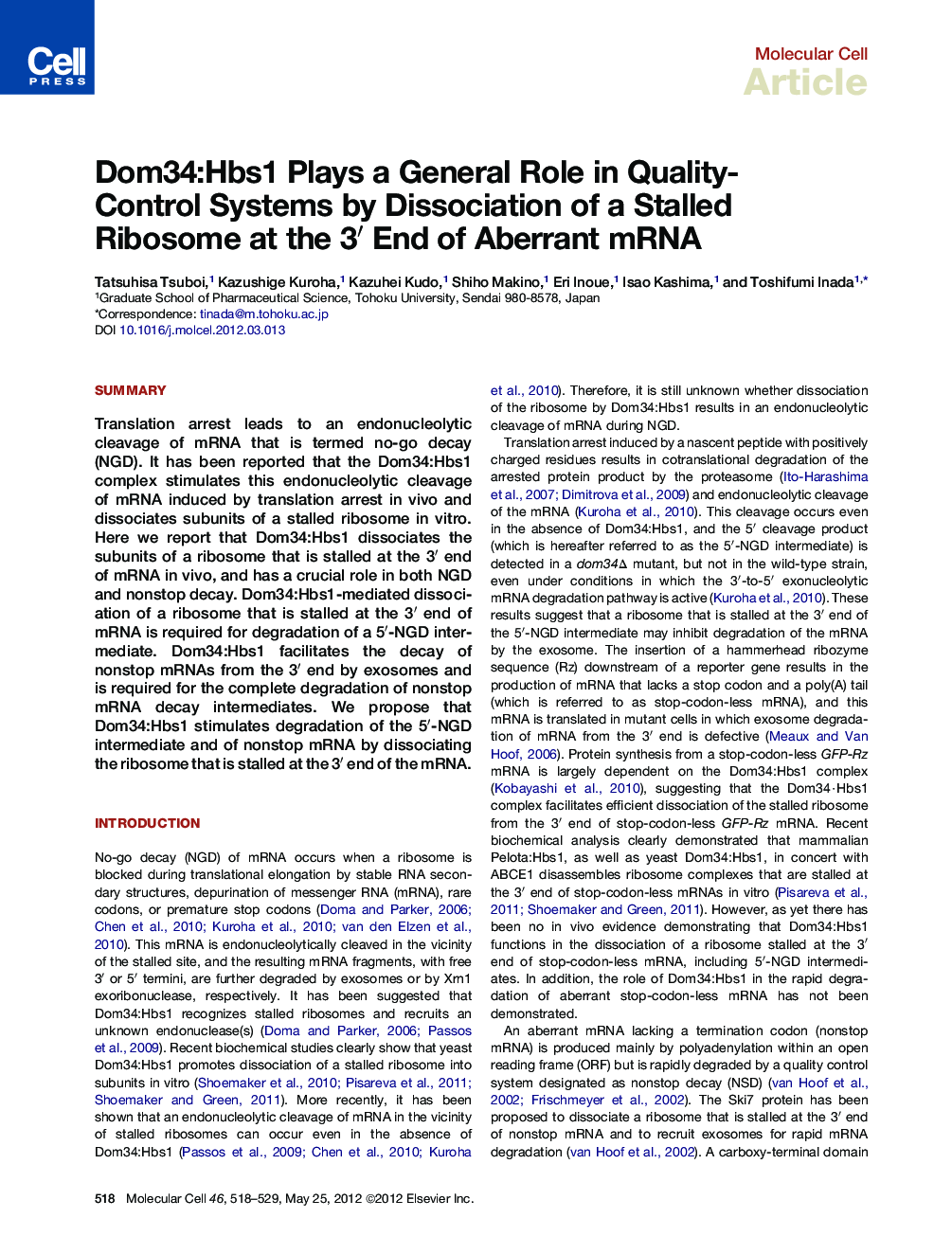| Article ID | Journal | Published Year | Pages | File Type |
|---|---|---|---|---|
| 1996589 | Molecular Cell | 2012 | 12 Pages |
SummaryTranslation arrest leads to an endonucleolytic cleavage of mRNA that is termed no-go decay (NGD). It has been reported that the Dom34:Hbs1 complex stimulates this endonucleolytic cleavage of mRNA induced by translation arrest in vivo and dissociates subunits of a stalled ribosome in vitro. Here we report that Dom34:Hbs1 dissociates the subunits of a ribosome that is stalled at the 3′ end of mRNA in vivo, and has a crucial role in both NGD and nonstop decay. Dom34:Hbs1-mediated dissociation of a ribosome that is stalled at the 3′ end of mRNA is required for degradation of a 5′-NGD intermediate. Dom34:Hbs1 facilitates the decay of nonstop mRNAs from the 3′ end by exosomes and is required for the complete degradation of nonstop mRNA decay intermediates. We propose that Dom34:Hbs1 stimulates degradation of the 5′-NGD intermediate and of nonstop mRNA by dissociating the ribosome that is stalled at the 3′ end of the mRNA.
Graphical AbstractFigure optionsDownload full-size imageDownload high-quality image (88 K)Download as PowerPoint slideHighlights► Dom34:Hbs1 dissociates subunits of ribosome stalled at the 3′ end of mRNA in vivo ► Dom34:Hbs1 facilitates the decay of nonstop mRNA and 5′-NGD intermediate by exosome ► Ribosomes stalled at the 3′ end of mRNA induce sequential endonucleolytic cleavages ► Carboxy-terminal region of Ski7 and Dom34:Hbs1 play independent roles in NSD
